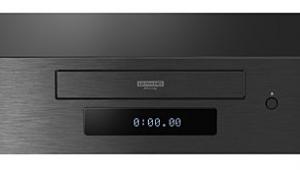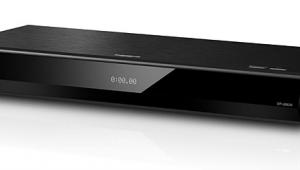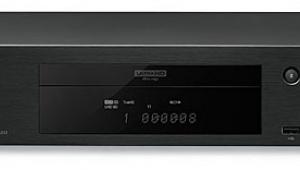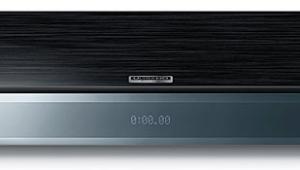Pioneer Elite BDP-05FD Blu-ray Player Setup & Tests
Since I wanted to test both the analog and digital audio outputs from the player, hookup wasn't as easy as it would have been with a simple HDMI cable. I had to connect a set of component cables and eight analog RCA cables from the player to my Onkyo pre/pro. Snaking the additional cables through my equipment rack made me really appreciate the convenience of HDMI.

Analog audio setup is much more complicated as well. In addition to the plethora of cables, you must specify the speaker size (small or large) and set the channel levels (range of ±6dB). I generally don't trust internal test tones, preferring to calibrate from a disc, so I used Digital Video Essentials: HD Basics to set the level for each speaker. In addition, the subwoofer channel needed an additional 12dB boost in my pre/pro. It took nearly 45 minutes to get things set correctly compared with five minutes calibrating the digital HDMI connection. In fact, it took nearly as long for the player to boot up and load the disc as it did to run the actual tests via HDMI.
The BDP-05FD does an excellent job deinterlacing a 1080i signal to 1080p. The film-detail tests on the Spears & Munsil Blu-ray test disc passed with flying colors, and there were no jaggies to speak of on Silicon Optix's HQV Benchmark on Blu-ray. When looking at the film resolution-loss test on HQV, the low-frequency burst patterns turned from pink to cyan as the test pattern moved back and forth, and there was shimmering in the high-frequency bursts, but I never noticed any issues in real-world material.
DVD playback was a different story altogether. The standard-definition Spears & Munsil DVD, the player failed every jaggies test. On the HQV Benchmark DVD, there was some shimmering in the three-bar test, and it took nearly a second for the player to lock onto the 3:2 cadence in the race-car sequence. Real-world tests from the opening of Star Trek: Insurrection and the Coliseum flyover in Gladiator didn't show any adverse effects that were present on the test discs, which I'm finding to be a common occurrence.
- Log in or register to post comments































































